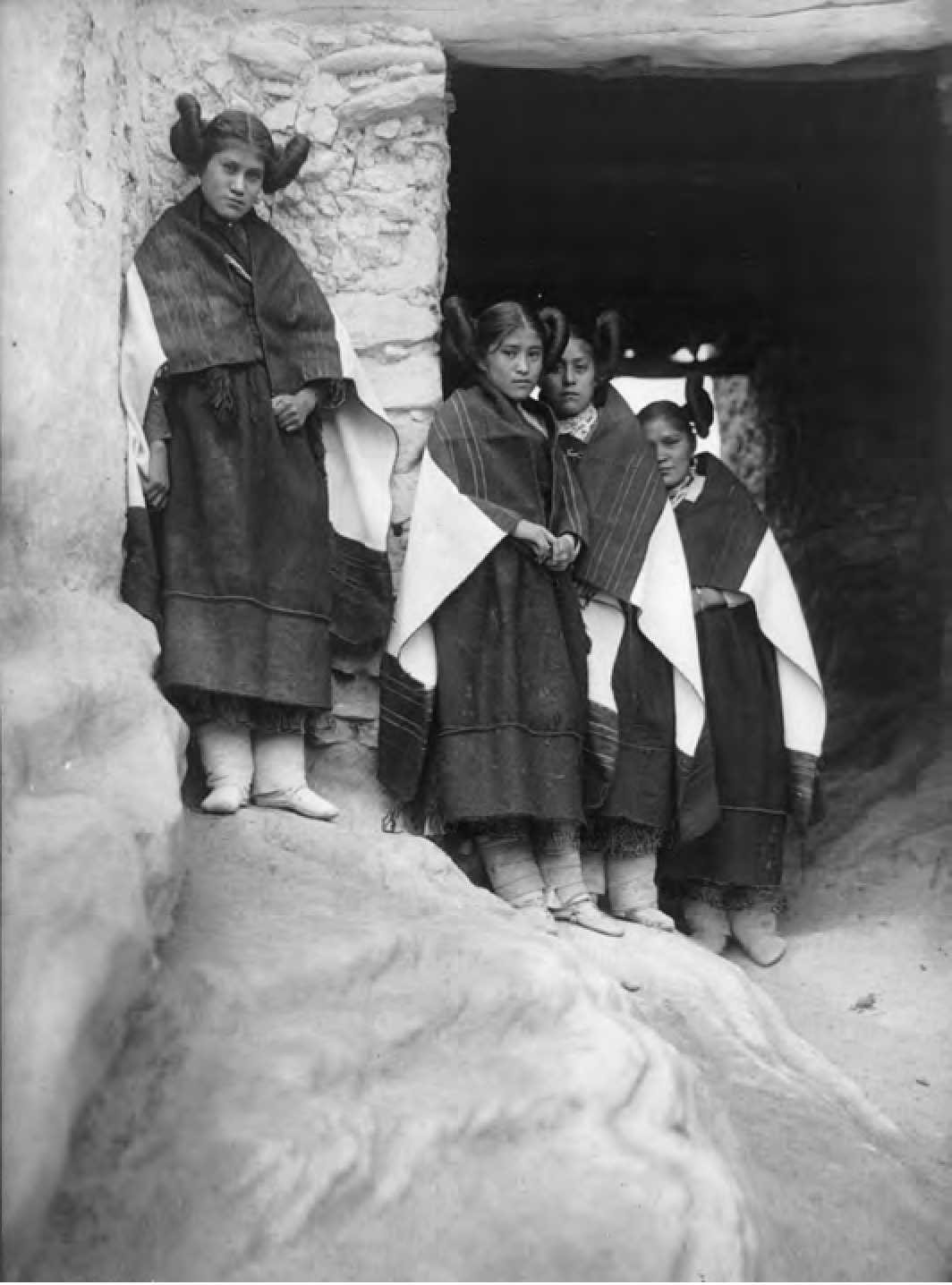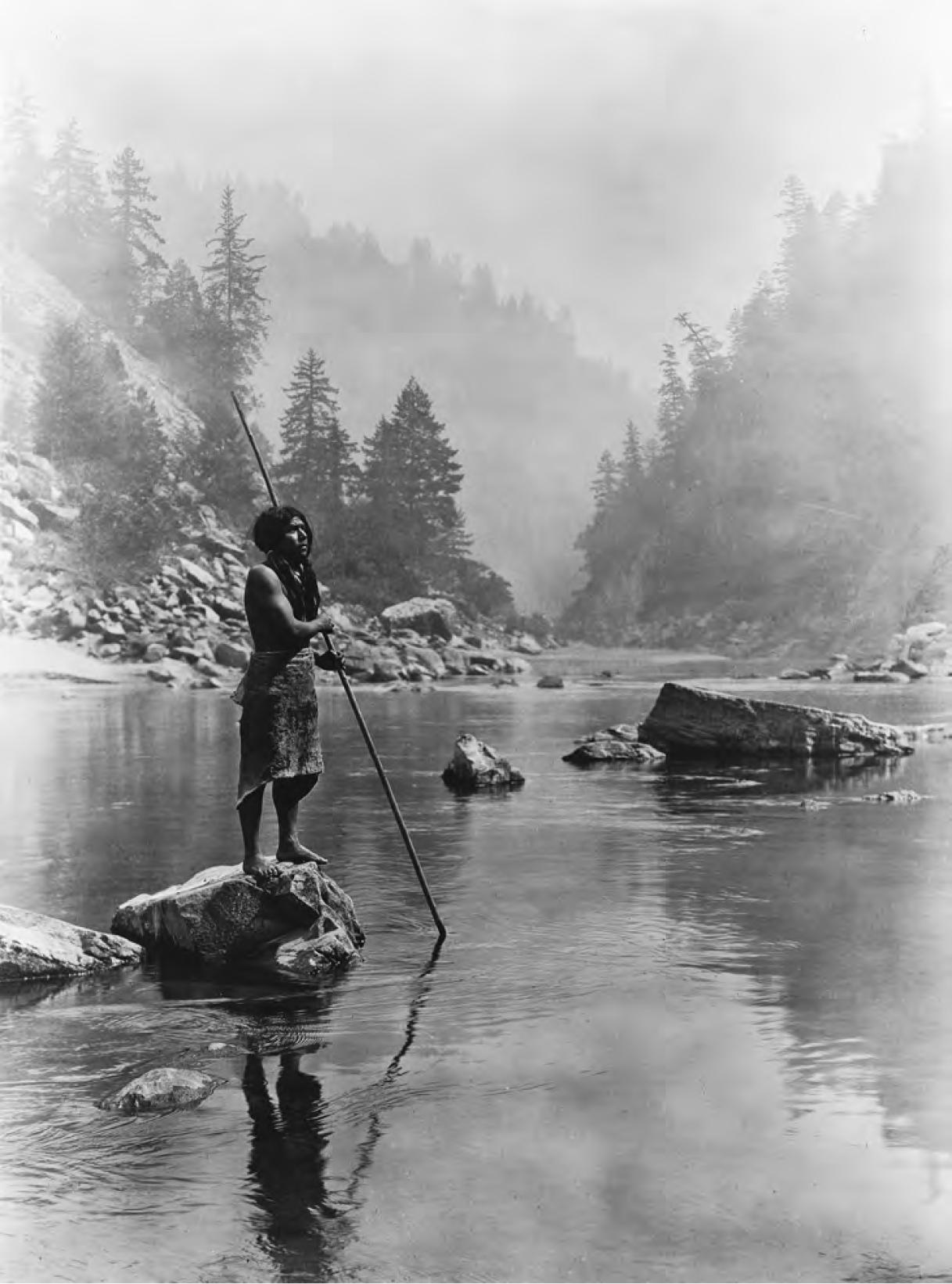Short Nights of the Shadow Catcher (39 page)
Read Short Nights of the Shadow Catcher Online
Authors: Timothy Egan

Having lost Muhr, his photo-finisher, Morgan, his patron, and Upshaw, his translator;
having had Phillips, his field stenographer, and Schwinke, his cameraman, go off to
other callings, Curtis counted on Myers as a brother in The Cause. Myers was his second
self, his ghost in the writing, his chief ethnologist, journalist, editor and wordsmith
combined, the only person alive who knew the work as well as Curtis, who bled the
project. What’s more, he and Curtis truly got along. After almost twenty years together,
“we never had a word of discord,” Curtis wrote.
The North American Indian,
with its exhaustive accounts of languages, customs and histories that had never been
fully recorded, might never have existed without Myers. Not only was his work ethic
extraordinary, matching Curtis in long hours, but his temperament was suited to the
thankless task. He rarely complained. But it was all over now.
“Like a bolt of lightning out of a clear sky” was how Curtis described the news to
Hodge.
He paid tribute to his partner in the introduction to Volume XVIII, the last book
to which Myers contributed. “In the field research covering many years, including
that of which the present volume is the result, I have had the valued assistance of
Mr. W. E. Myers, and it is my misfortune that he has been compelled to withdraw from
the work, owing to other demands, after so long a period of harmonious relations and
with the single purpose of making these volumes worthy of the subject and of their
patrons,” Curtis wrote. “His service during that time has been able, faithful, and
self-sacrificing, often in the face of adverse conditions, hardship, and discouragement.
It is with deep regret to both of us that he has found it impossible to continue the
collaboration to the end.” Myers wept when he read the dedication.
The new kid was just out of the University of Pennsylvania, a native of Vermont. Did
he know anything about the West? About Indians? About ethnology? Not much, as it turned
out, but Stewart Eastwood had taken some anthropology classes and had come highly
recommended by an authority on “Eastern Woodland Indians,” as his résumé said. Eastern
Woodland Indians? Who the hell were they?
Curtis had tried to lure Hodge out of the office to take up the final fieldwork with
him, knowing he liked to flee the city, particularly for trips to the Southwest. But
Hodge had a full schedule at the museum, so he vetted the Ivy League kid and sent
him out to Oklahoma to meet the Shadow Catcher. It was a rough go. Eastwood joined
Curtis at a large intertribal gathering in the flat light of Oklahoma. They spent
weeks working sources, looking for faces to shoot, stories to tell. It was depressing.
“The program is tentative,” Eastwood reported back to Hodge, “we are up in the air
since so many problems have arisen . . . The five civilized tribes are so much civilized,
so white, that they will be impossible while the wealthy Osage are not only becoming
civilized but wealth gives them a haughtiness difficult to overcome.” It was a problem,
this business of civilized tribes and tribes grown rich from oil discoveries on tribal
land. Curtis noted that “idle wealth” was like a disease among the Osage; the men
were chauffeured around in new cars, while the women—in an ironic twist—employed poor
whites as their housekeepers.
The Wichita were another kind of problem. Mormon and Baptist missionaries had been
all over them, and as a result, many tribal customs were now banned as pagan rituals.
Their practice could mean a sentence to hell. “Couldn’t even take a picture of one
of their grass houses,” Eastwood complained. (Curtis eventually managed to shoot that
very image, titled
Grass House—Wichita,
for Volume XIX.) Tribe after tribe, it was the same story—no story. The past had
not only been banished but wiped away, no trace of it in this new land. The urgency
of his work over nearly a third of a century, always in a hurry to stay one step ahead
of “civilization,” was never more justified than in Oklahoma. There, Curtis saw his
worst fear; it was why he’d lamented, time and again, that with each passing month
“some old patriarch dies and with him goes a store of knowledge and there is nothing
to take its place.”
No tribe in the country had fallen so far as the Comanche. Once, as masters of an
enormous swath of flatland, they had forced Texans to retreat behind settlement lines
and Mexicans to run at the sight of them. Indians from other tribes would slit their
own throats before allowing themselves to be taken prisoner by a Comanche. There were
no better buffalo hunters, nor more efficient warriors, than this tribe. They reveled
in scalping and torture of enemies, particularly fellow Indians without battle skills.
Their raids for wives and horses were legendary, going after the Apache, the helpless
Five Civilized Tribes and assorted natives up and down the Rio Grande and north into
Kansas and Colorado. All of it was carried out with an exuberant “blood lust,” as
Curtis wrote. The sight of the Comanche now, forced into stoop labor, raising chickens
on a reservation in Caddo County, Oklahoma, was pathetic to Curtis. “The old wrinkled
men,” he wrote, “sit about and tell of the days of their ancestors when life was real
and full of action.” The best he could do was to concentrate on portraits. Only in
the faces could Curtis find some hint of the authentic. He did not care if they appeared
before his camera in starched shirt and tie; what fear the Comanche still struck in
the hearts of others would have to emanate from a glare that carried a sense of menace
from their grandparents.
The text was a struggle from start to finish. Hodge judged it an inferior work and
asked for a major rewrite. He complained to Eastwood about his spelling, accuracy,
sentence structure and the paucity of new information. It was a mess. They clearly
needed Myers’s hand. And Myers himself was sorry that the work had suffered so much
from his departure, feeling author’s remorse. “I am distressed by your report on vol.
19,” he wrote Hodge, “it really causes me regret that I yielded to the lure of Mammon.”
By early 1927, after hammering away at Eastwood, Curtis felt the kid was improving,
though he was not holding up well to the withering critiques from Hodge. Eastwood
threatened to quit.
“You’re a good editor but a bum diplomat,” Curtis wrote Hodge. “It has taken a lot
of quick figuring and hard talking to keep the boy in line. To have him drop out at
this last moment would wreck the ship.” Hodge insisted they keep their standards high
this close to the end. “There is no need of being thin-skinned in a work of this kind.
The manuscript is either right or wrong, and if wrong should be righted.” The writers
went back to their notes, but it was hard to find water when the well was dry. As
they closed out the editing, Curtis conceded that Volume XIX probably would not stand
among the rest. Time had robbed him of the chance to find the pulsing heart of Indian
life in the state with more Indians than any other.
“You say the Comanche material is inadequate,” he wrote Hodge in a testy exchange.
“I grant you that it does not make a strong showing, but one cannot make something
from nothing . . . The only material we could find was countless, meaningless, fragmentary
obscene stories of the camp fire type.”
There remained one chance for redemption: to finish on a high note in the far north.
Alaska had held a special place in Curtis’s heart ever since his sea journey there
with the Harriman expedition of 1899. He was thirty-one then, still on the boyish
side of manhood. The gimpy-legged graybeard of 1927 who made plans for the final field
trip of
The North American Indian
was broke, divorced, a year shy of his sixtieth birthday. He had a lifelong nicotine
addiction and the smoker’s hack to go with it, as well as assorted grumpy complaints
about his bad fortune at this stage of life. And yet in one respect he moved as he
always did: confident in motion itself as the animating virtue of his existence. Beth
would finance the trip with money from the studio and from her husband, Manford Magnuson,
whose own portrait photography business was doing well. The latest home of the Curtis
studio was the Biltmore Hotel in Los Angeles, which gave it a glamorous address for
the stationery and was a prime spot for tourist traffic. Visitors from the East or
from Europe needed to go no further than the lobby of their downtown hotel to purchase
a Curtis Indian, the kind of picture that would generate stories back home and become
an heirloom in time.
The new plan was to sail from Seattle to Nome, a fogbound seaport in Alaska Territory,
ice-free only a few months of the year, within easy distance of the Arctic Circle.
From Nome they would branch out to the Bering Sea, to islands and cliffs, in search
of Eskimo people, all the way to the Siberian shore. They could work sixteen-hour
days in the midnight sun, Curtis reasoned, and stretch the season out until the first
snows of September. “Good fortune being with us we may, by working under great pressure,
manage to finish the task in one season,” Curtis wrote. The college kid, Eastwood,
signed on for a second go-round despite his difficult rookie outing in Oklahoma. The
joy for Curtis was the first assistant, his daughter Beth. For much of her life she
had dreamed of spending time in the wild with her father. Florence had gotten to experience
him in action in California. Now it was Beth’s turn. When Myers heard of the final
launch of
The North American Indian,
he was sick with regret, killing time in San Francisco, his real estate deal yet
to come together.
“Curtis writes me that he is leaving for Alaska,” Myers told Hodge. “I wish I were
going.”

1906. The young women wore their hair in squash blossom whorls.

1906. Curtis returned to the Hopi Nation more than half a dozen times, until his
presence was barely felt. These women lived at the summit of the stone village of
Walpi, in Arizona.

1923. In northern California, after many years in which his grand project was at
a standstill, Curtis was revived by a trip with his daughter Florence back into Indian
country.
1927
T
HE STEAMER VICTORIA
left Seattle on June 2, 1927, bound for Nome and ports in between, a journey of 2,350
miles by sea, a bit shorter than a trip by train from Puget Sound to New York. The
rail travel cross-country could be made in four days. The passage to northern Alaska
was supposed to take ten. A late-spring drizzle misted over Elliott Bay as Curtis
and his daughter posed on deck. He was in suit and tie, with a thick woolen overcoat,
cigarette in hand. Beth wore a flapper’s cap, a fur-collared jacket and a cocky smile
that bore her father’s DNA. “It truly seemed as though I was going to the other end
of the world as the boat pulled out from the wharf and I was finally on my way for
the much longed for trip with Dad.” Both father and daughter kept diaries. For Curtis,
it was the only time he wrote a day-by-day account of his activity, and he even gave
it a title: “A Rambling Log of the Field Season of the Summer of 1927.”